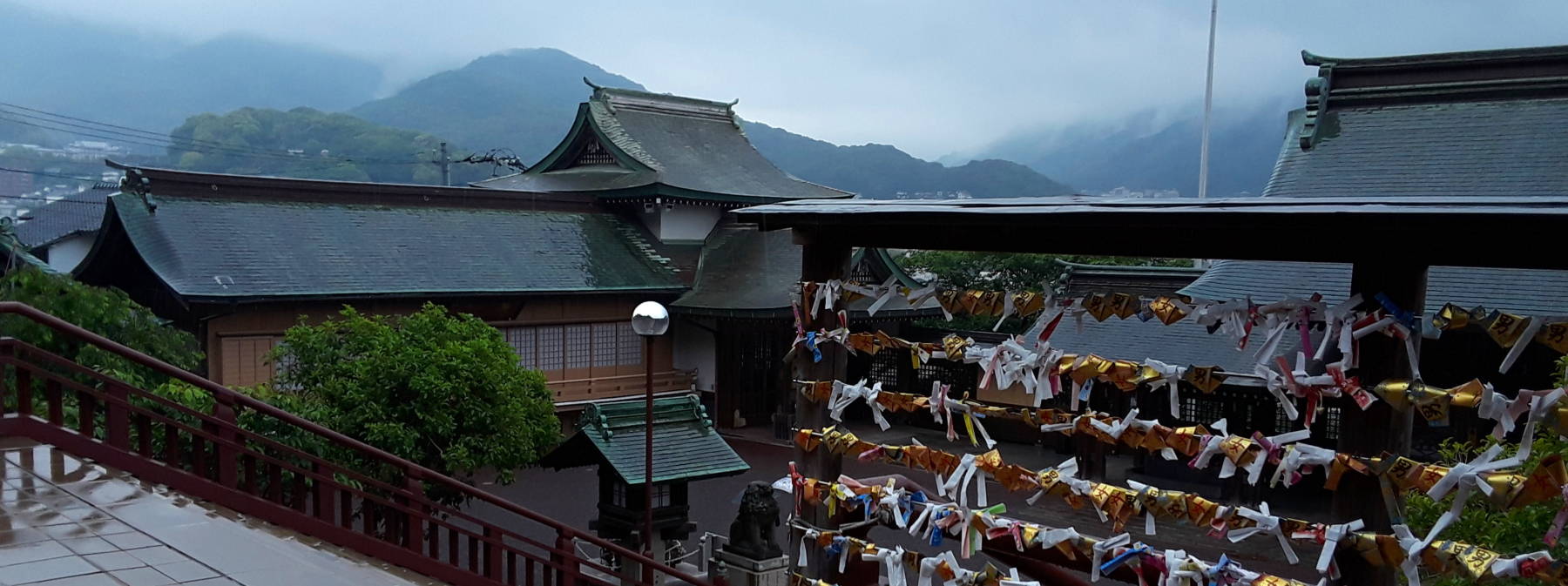
Temples and Shrines on a Rainy Day
Nagasaki in the Fog and Mist
I was staying along the small Nakashima River,
and heading out on a rainy day to visit some
shrines and temples.
I would start at Suwa Jinja,
an important Shintō shrine.
It was founded because of the conflict between the native
Shintō, Buddhism imported from China,
and the new faith of Christianity introduced by
Portuguese missionaries.
Then on to Sōfuku-ji, one of the Chinese-founded
Buddhist temples in Nagasaki.
It's a Ming-era temple better preserved than
any in China.
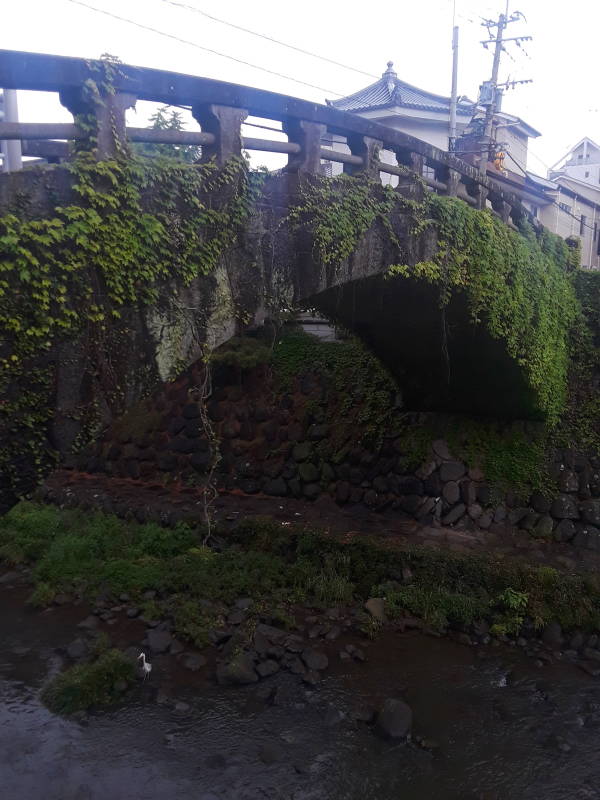
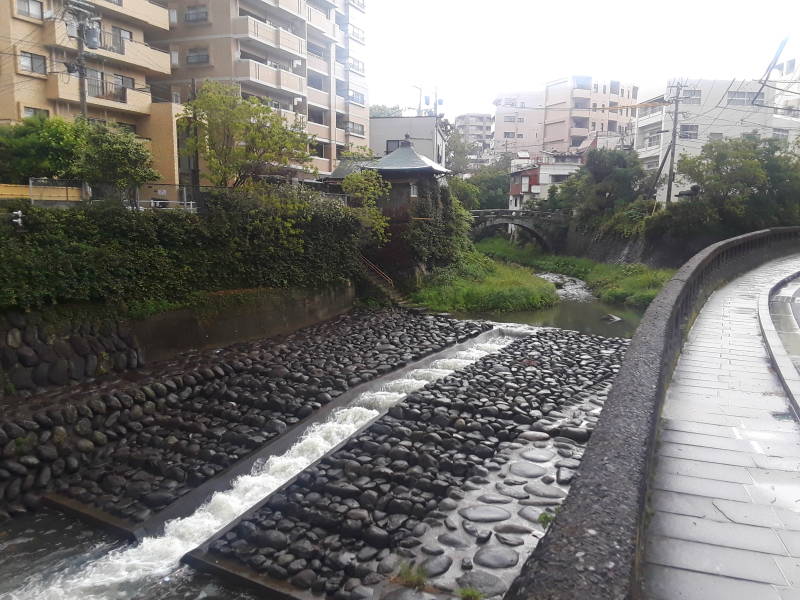
Suwa Jinja
Suwa Jinja is up a 277-step stone staircase starting near the Nakashima River. You pass through a series of torii, gates that mark your passage into increasingly sacred space.
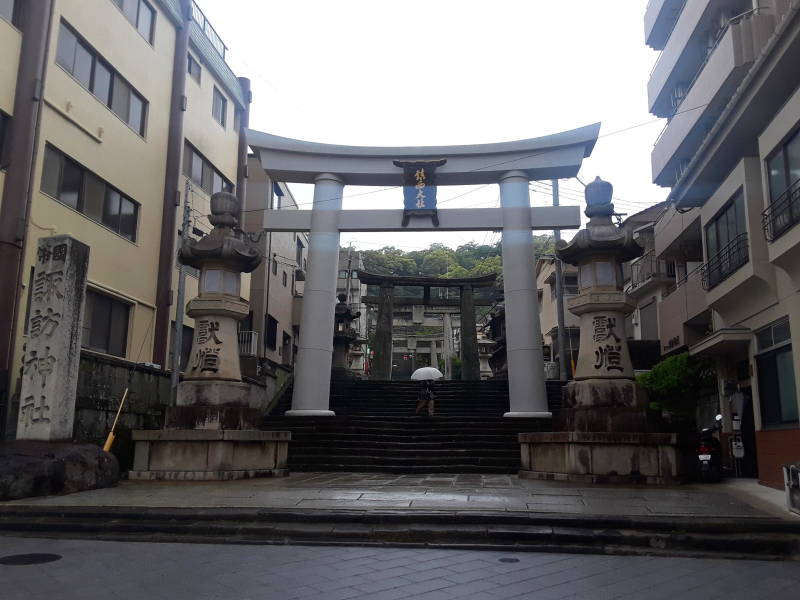
The Suwa shrine was officially founded in 1614. That was the year that shōgun Tokugawa Ieyasu issued an edict prohibiting Christianity in Japan. Nagasaki was then the center of Christianity, and many of the port city's Shintō shrines and Buddhist temples had been destroyed.
The idea was that the Suwa shrine would help to stop and reverse Nagasaki's conversion to Christianity.
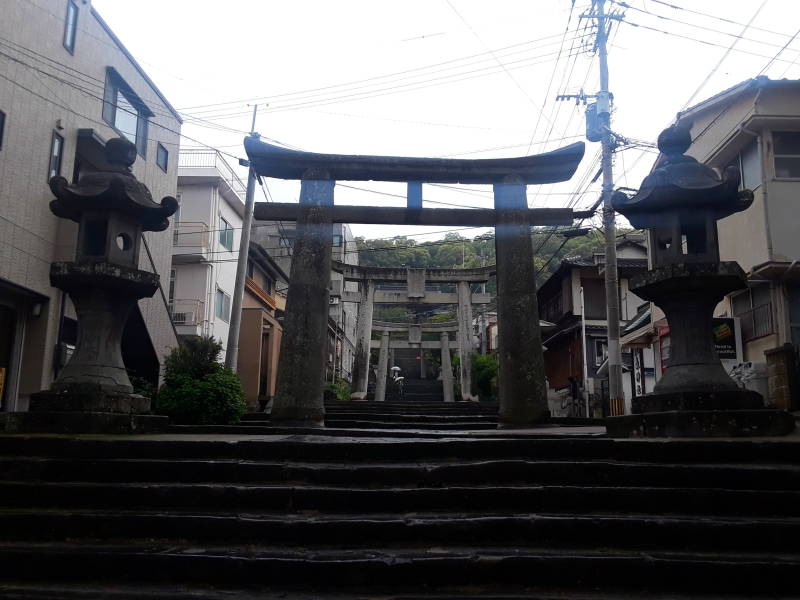
The is one of many Suwa shrines, all dedicated to Suwa-no-Kami, a kami of valor and duty.
More than you care to know about ShintōThe kami are the spirits or deities of Shintō. They certainly aren't gods in the sense of Judaism, Christianity, Islam, or Hinduism. Or in the sense of a deity or Bodhisattva as recognized in Buddhism. Nor is Shintō really a religion as that word is generally used outside Japan.
A kami is a spirit of a place, possibly embodied in the view of a mountain or lake, or the sound of a waterfall or stream.
Shintō is the primal practice of Japan. Suwa-taisha or the Suwa Grand Shrine complex in Nagano Prefecture is thought to be one of the oldest shrines in existence. The Nihon Shoki, the "history" written down about 720 CE, described the origin of Japan, its basis in Shintō practice, and the descent of the Emperor from the gods who created the universe. It reported that the Suwa Grand Shrine was already there in the late 600s.
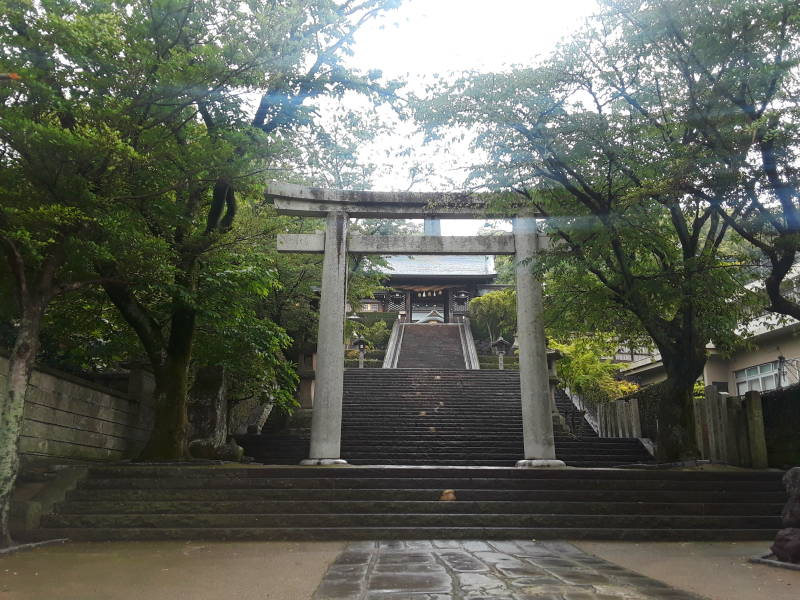
I'm getting closer. A twisted straw rope or shimenawa may hold several shide, a white streamer made from paper, hemp fiber, or similar material.
The shide can represent the enshrined and invisible kami, the deities or spirits. And so, in an altar area within a shrine, shide may be the focus of devotion.
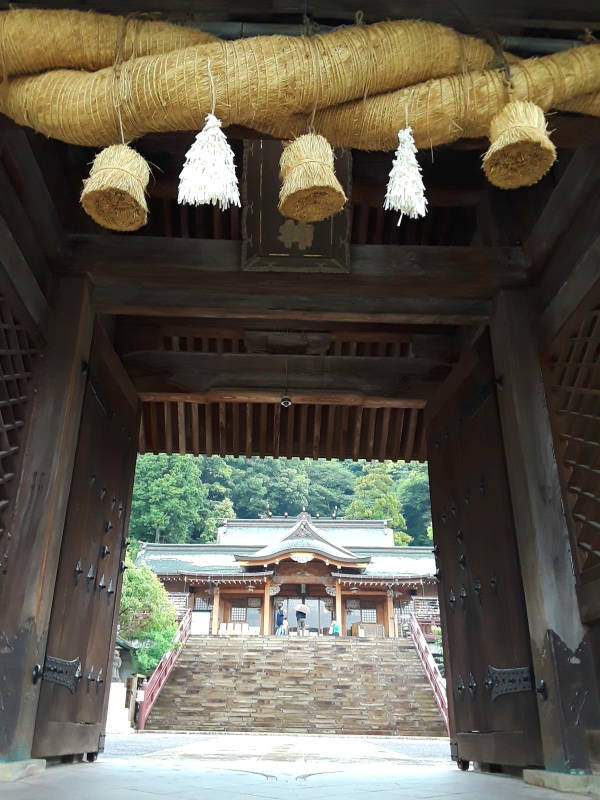
I've made it up all 277 steps.

Well, most of the 277 steps. There are a few more to ascend to the top shrine.
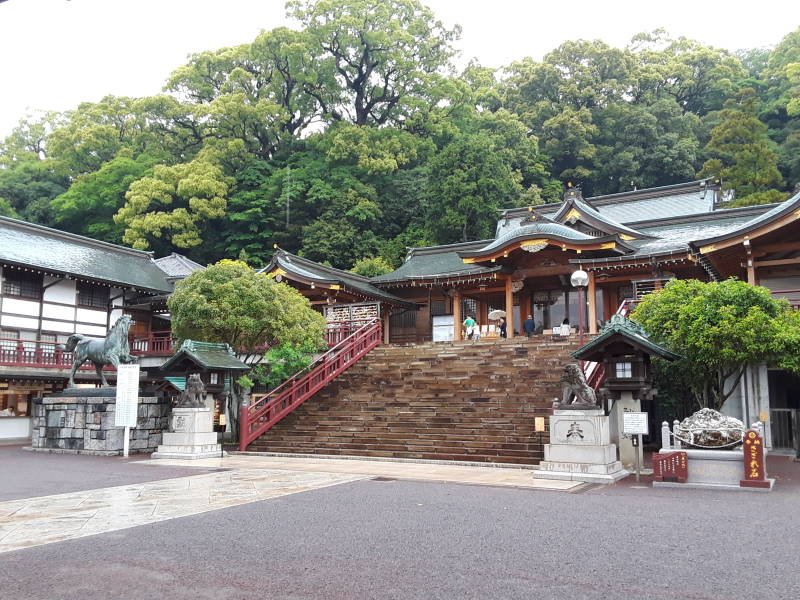
Suwa shrine was dedicated with a ritual where the Shintō priest demonstrates his communion with the kami by plunging his hands into boiling water, unharmed. A form of ritual continues today in the annual festival.
An edict went out — everyone in Nagasaki had to register at Suwa jinja, and come to the annual autumn festival. The goal was to discover any remaining Christians, who would then be arrested, tortured, and possibly executed.
Because Nagasaki was the only open port, the annual festival also provided an opportunity to impress the Dutch and Chinese merchants.
The "Stop Lions", seen below, are a famous feature of this shrine. Tradition says that if you want to stop a behavior, such as smoking, you should tie a piece of string or paper around their front leg and pray for their assistance.
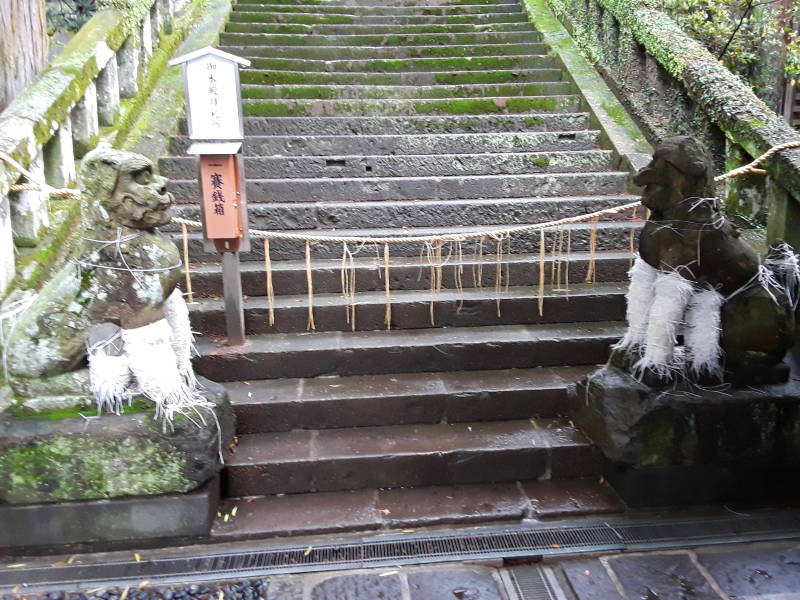
I was in Japan for a frustratingly short and disoriented business trip in 1992. People in the early 1990s smoked like chimneys. By the late 2010s, smoking was uncommon.
I credit that to the Japanese cultural willingness to carefully follow reasonable rules. But knowing that the Stop Lions are there, maybe helps that a little.
The nuclear bomb dropped on 9 August 1945 exploded about 3.5 km up the Uragami River valley from the intended aim port near the harbor. It destroyed the Roman Catholic neighborhood and cathedral in the Uragami district. But the Suwa shrine was protected by being on the lee side of Mount Tamazono-san, the ridge separating the Uragami and Nakashima valleys. Some attributed this to the protection of the native Japanese kami as opposed to the imported Portuguese-Christian god.
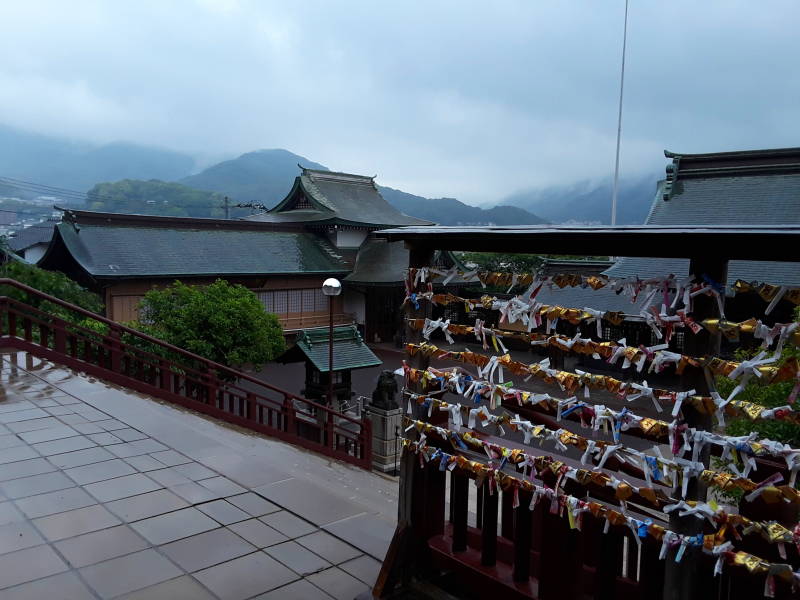
You can get lunch at Suwa jinja. I had ramen and tempura.
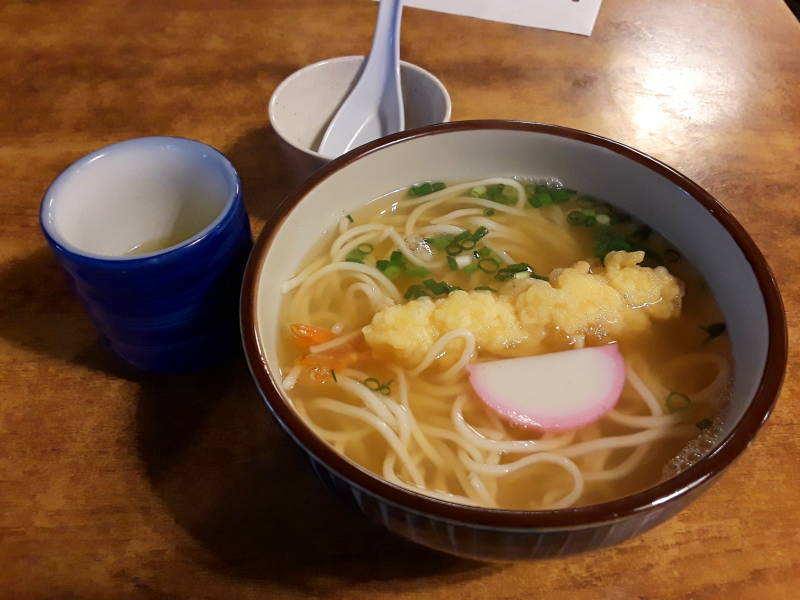
Sōfuku-ji
Sōfuku-ji is southeast of the Nakashima River. You can take either the #1 or #4 streetcar to the Sōfuku-ji stop at the end of the line, then it's about three blocks away.
The temple was founded in 1629 by the Chinese monk Chaonian or Chozen, for people from Fuzhou, Fujian Province, who had settled in Nagasaki and become merchants.
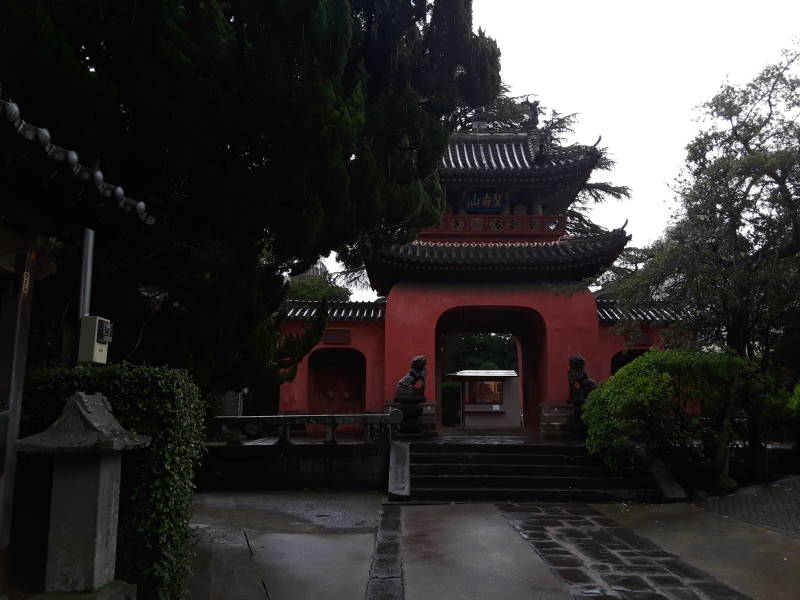
The red sanmon or entrance gate is an example of south China's Ming dynasty architecture. This temple complex is one of the best surviving examples of Ming architecture anywhere, including in China.
Many of the people who came from Fujian Province were fleeing the political turmoil of the end of the Ming Dynasty.
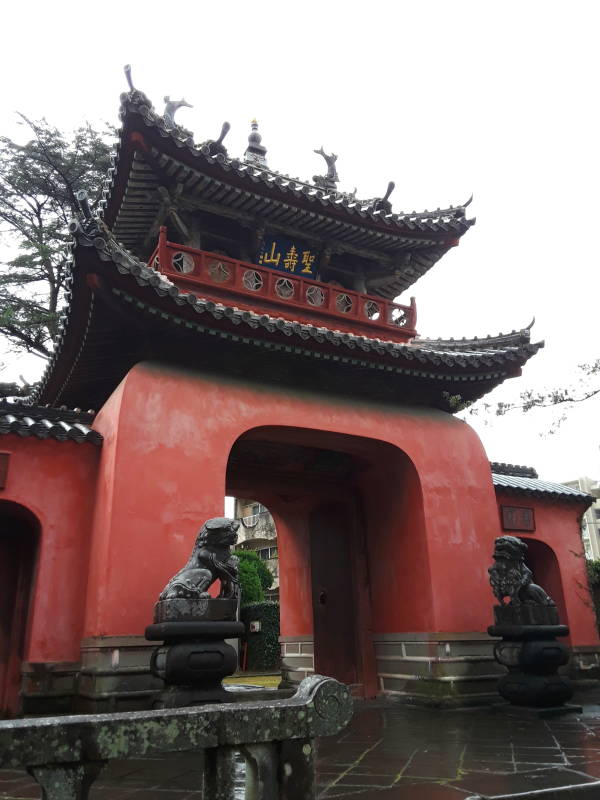
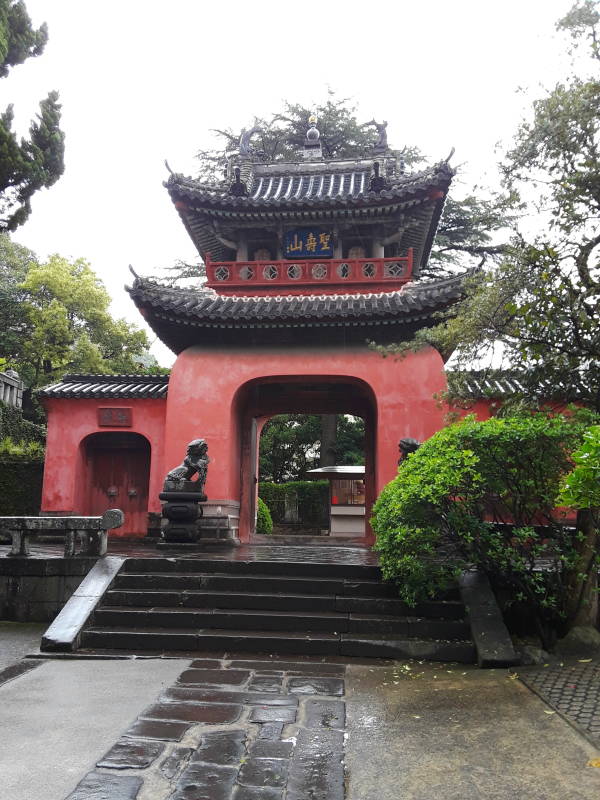
Sōfuku-ji belongs to the Ōbaku-shū sect of Zen Buddhism. That's the smallest of the three surviving Japanese sects of Zen Buddhism.
This is confusing. The Shōfuku-ji temple I visited on a sunny day, another of the "Chinese temples" in Nagasaki, is also of the Ōbaku-shū sect. Sōfuku-ji versus Shōfuku-ji.
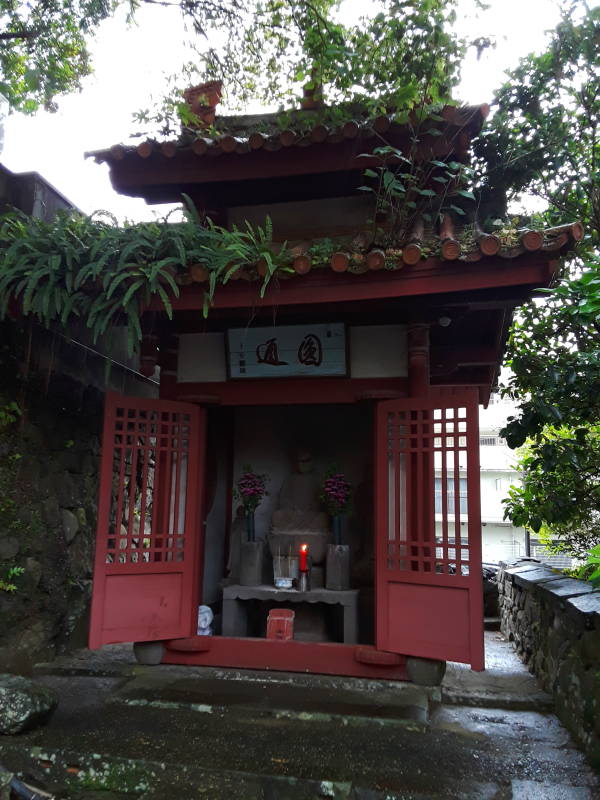
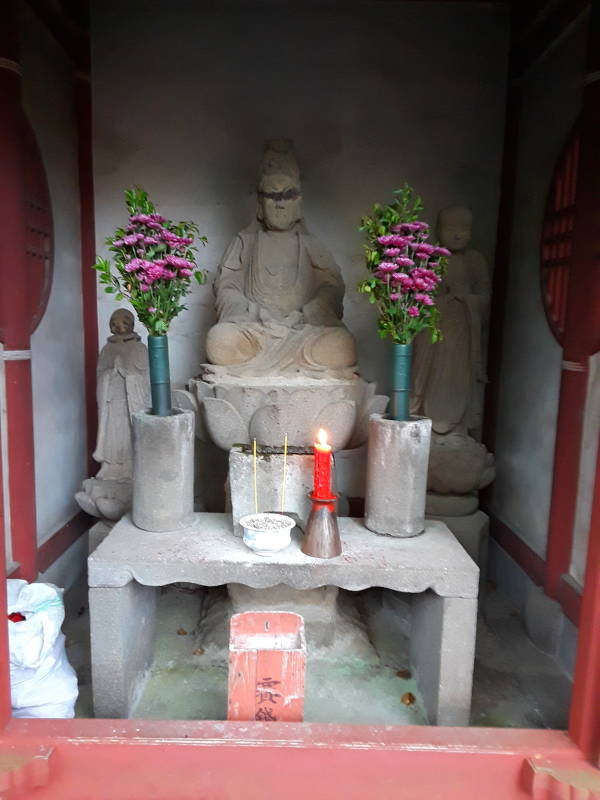
The Daiippō-mon gate has been designated as a National Treasure. Its inscriptions are thought to have come from the Zen master Ingen.

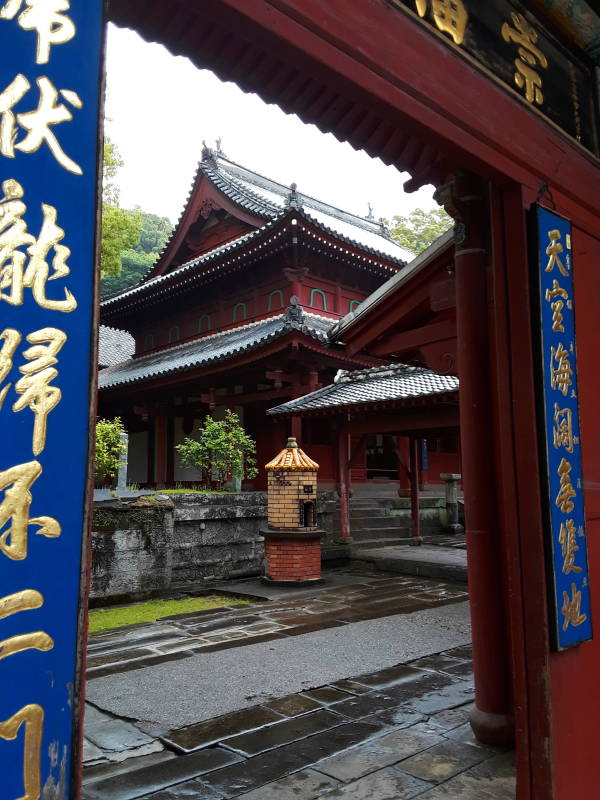
The yellow brick furnace is used for burning worn-out copies of scriptures that have been replaced.
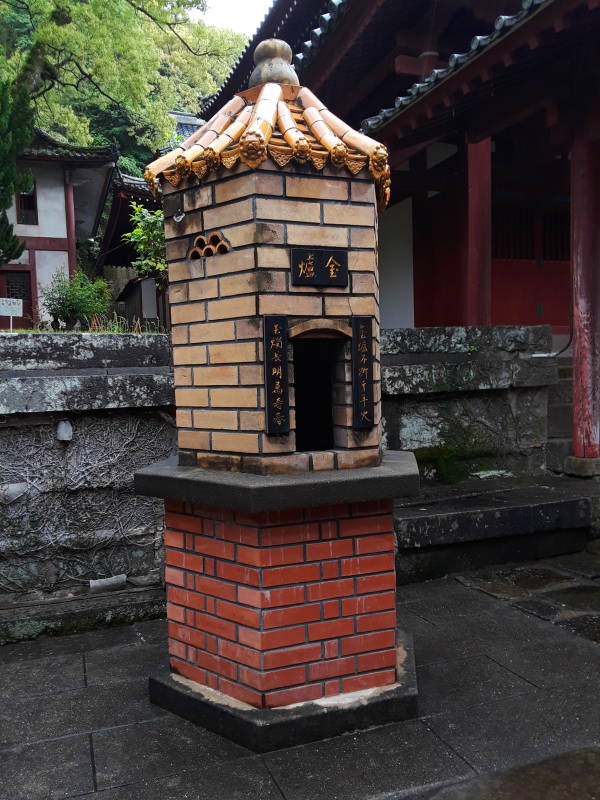
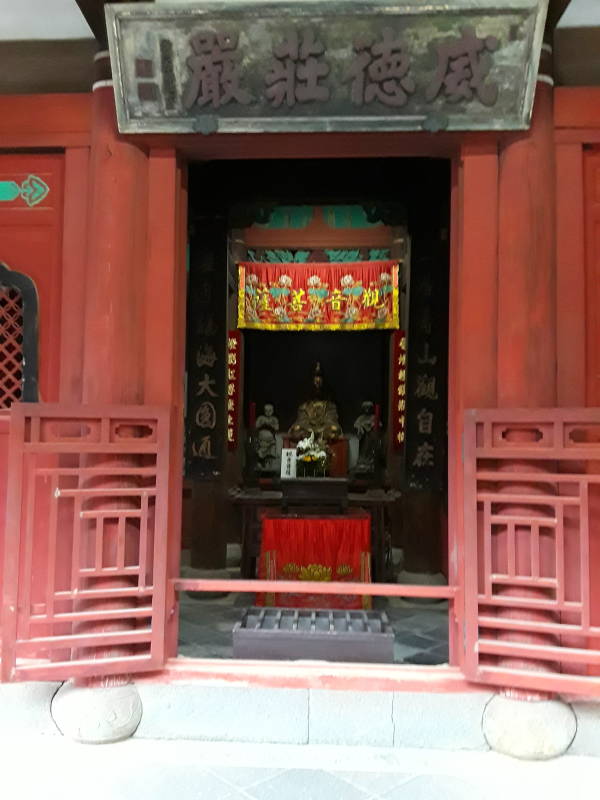
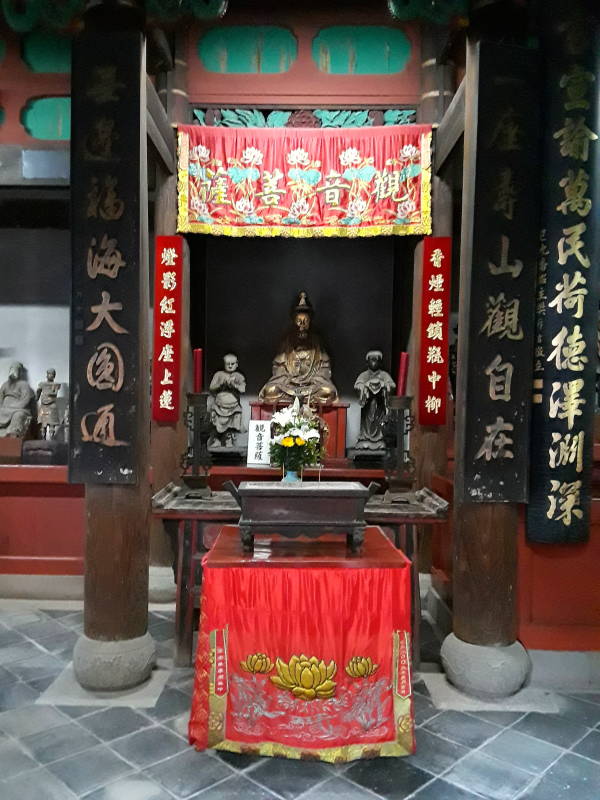
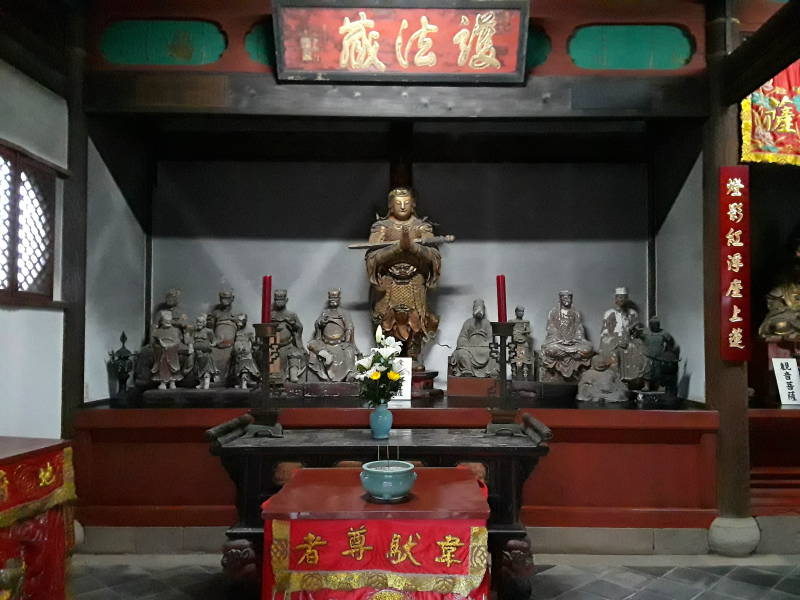
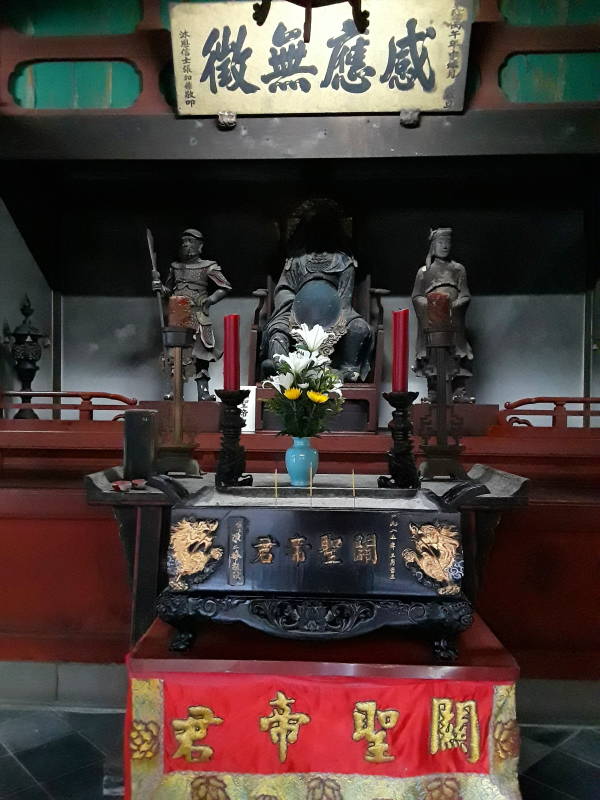
The Daiyū Hōden or Buddha Hall has been officially designated as a National Treasure.
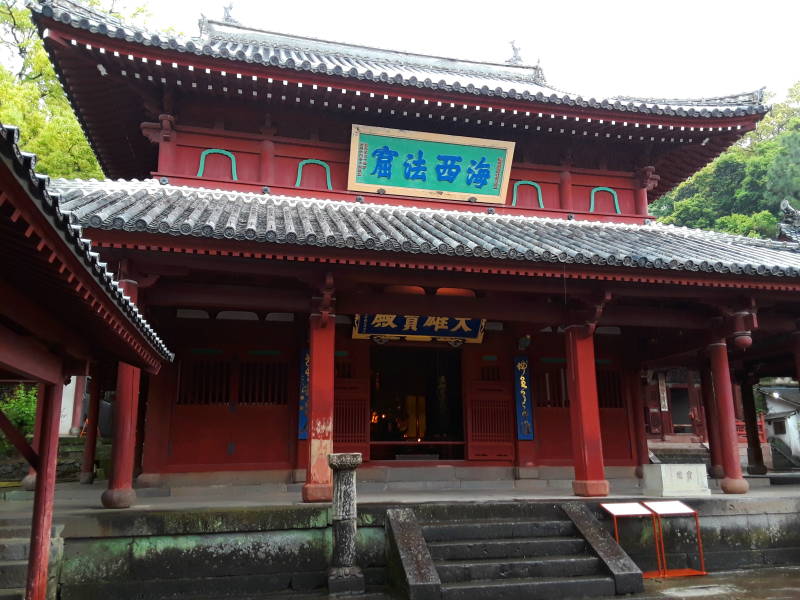
The Daiyū Hōden was built in 1646. Along with the Daiippō-mon, built in 1629, they are the oldest surviving structures in Nagasaki.
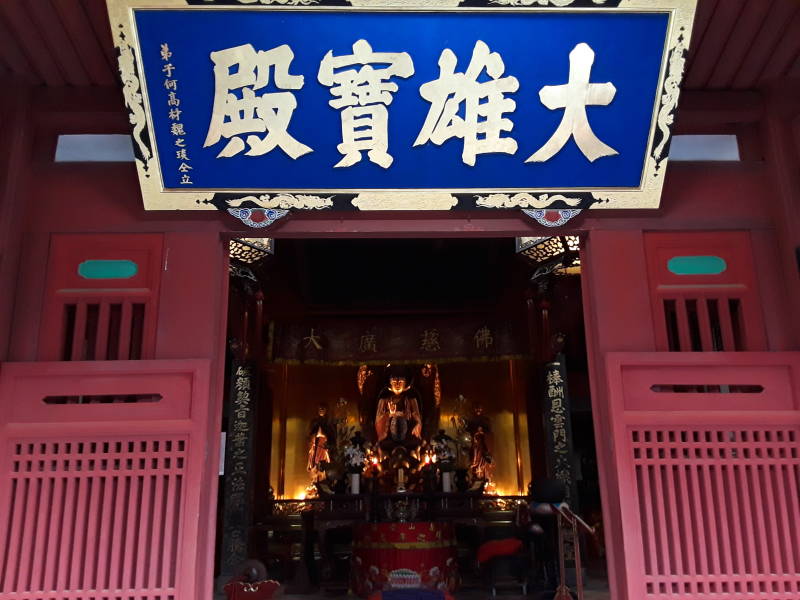
in Japan
The Buddha Sakyamuni is the object of devotion and veneration in the Daiyū Hōden.
Śākyamuni or "sage of the Śākyas" is a title for Siddhārtha Gautama, the founder of Buddhism. Buddha means the "Awakened One" or "Enlightened One".
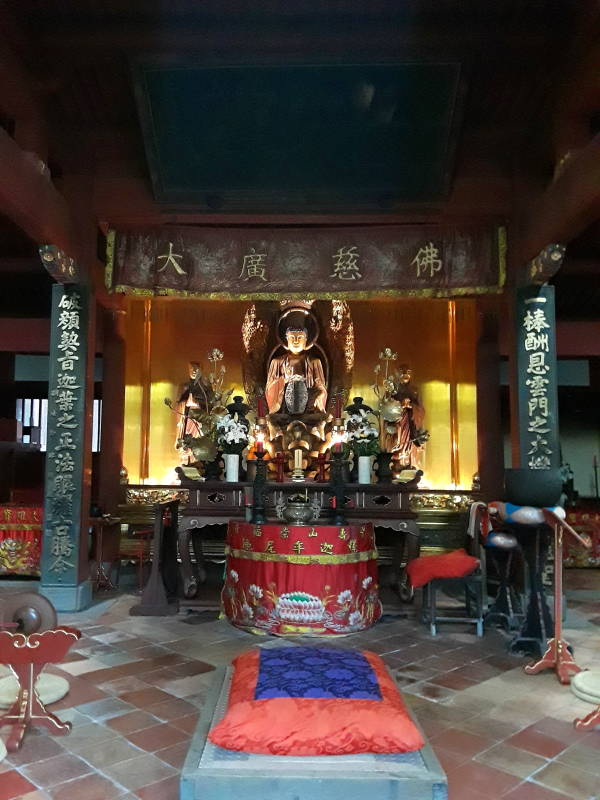
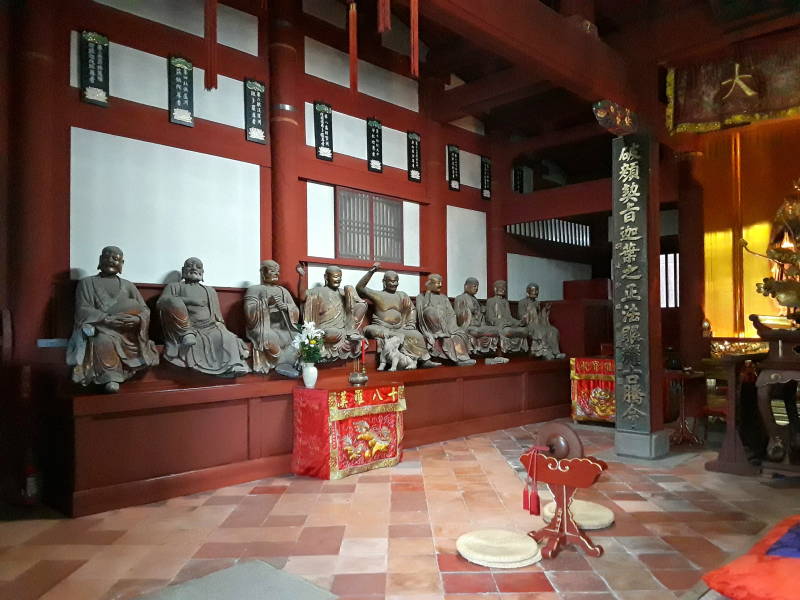
The resident priest Qianhai used this large cauldron to cook porridge or gruel for the people during the famine of 1681. It was made by a Nagasaki family of metal casters. The temple fed up to 3,000 people each day.
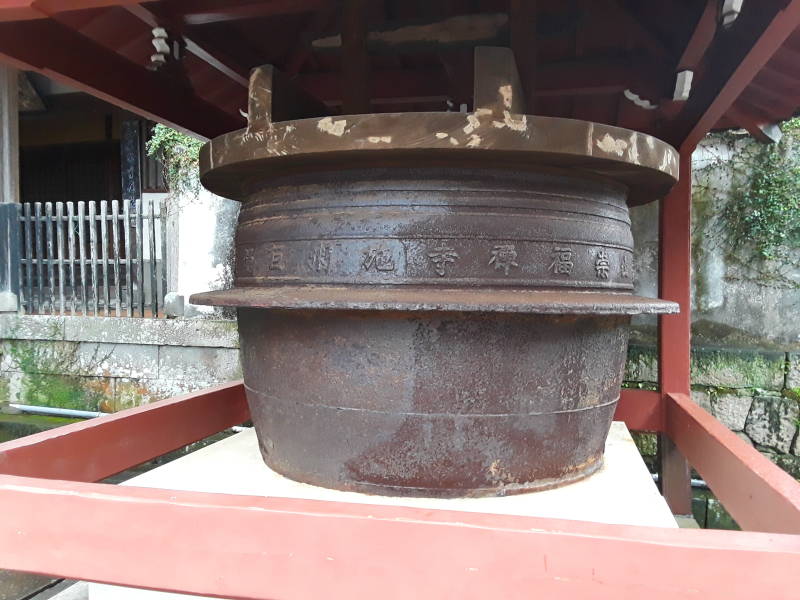
The goddess of the sea Maso is enshrined in the Masodo, built in 1794.
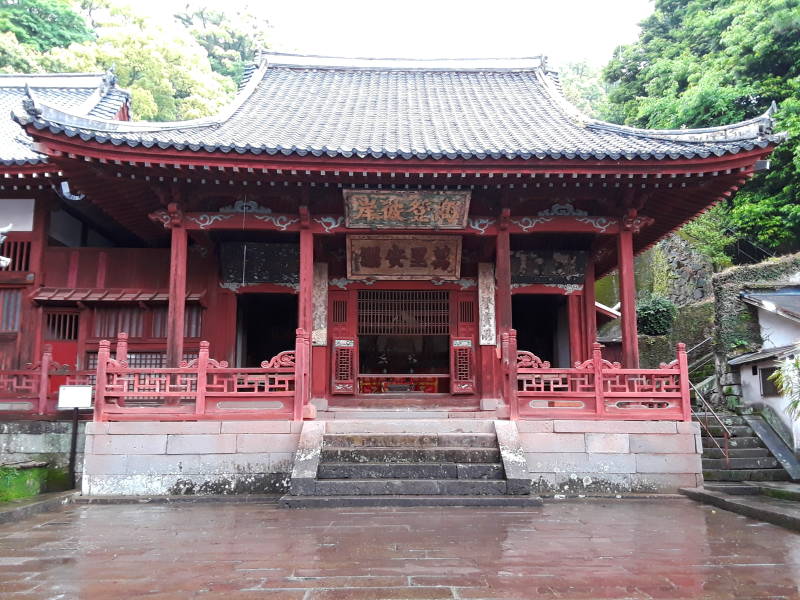
Maso or Mazu is a Chinese sea goddess, the deified form of a purported historical Fujianese shamaness traditionally said to have lived from 960 to 987.
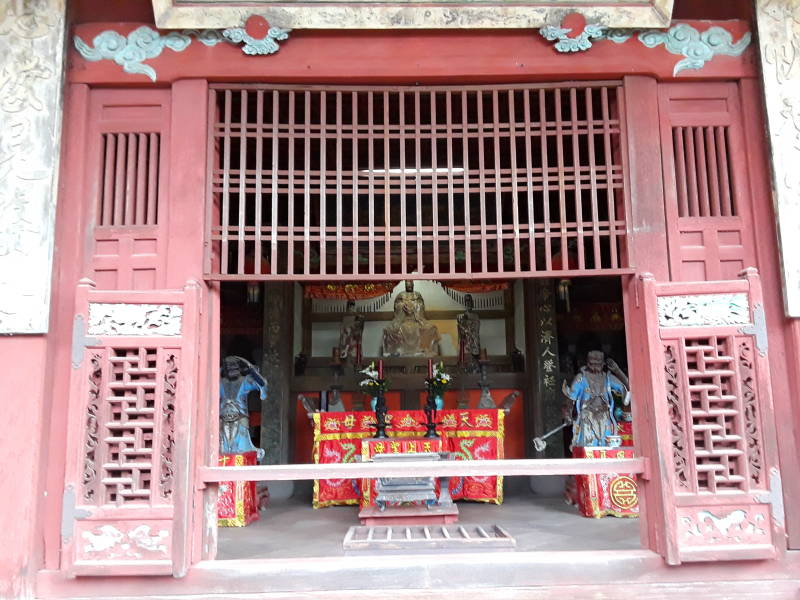
She is revered as a protective goddess of fishermen and sailors, worshiped along China's coastal region and in overseas Chinese communities like Nagasaki. Her followers regard her as a powerful and benevolent Queen of Heaven who roams the seas protecting her believers through miraculous interventions.
Chinese boat owners paid for the Masodo or Mazu Hall.
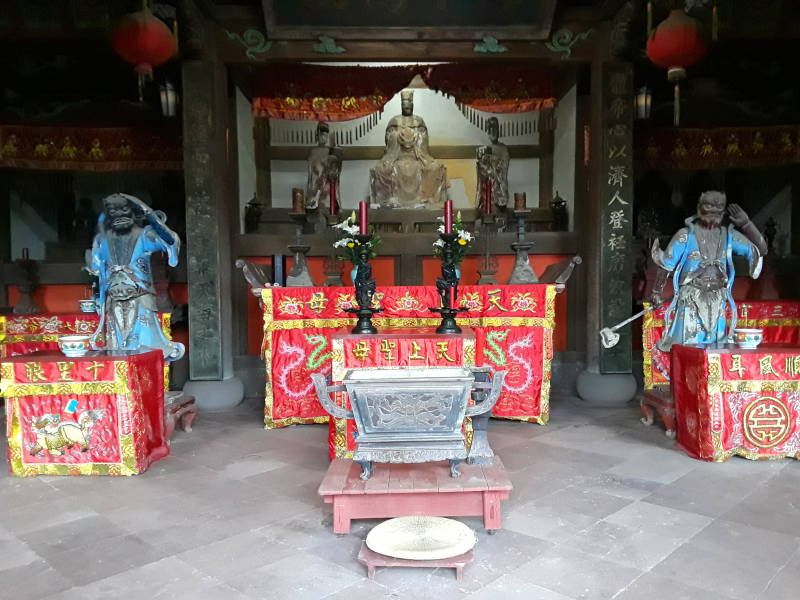
The Sōfuku-ji Buddhist temple complex includes the Shintō shrine seen below. No anthropomorphic figures, no representation of the kami or spirit.
The concept of shinbutsu-shūgō held that a Shintō kami could manifest as a Buddhist bodhisattva. Buddhist temples began hosting Shintō shrines, and vice-versa.
When the Emperor returned to power in the Meiji Restoration in 1868, Shintō and its focus on the Emperor's descent from the creator gods reversed that trend. Shinbutsu bunri was the term for the forced separation, to the advantage of the native Japanese Shintō over the imported Buddhism. It was only partially successful, and probably much less so in Nagasaki with its strong Chinese influence.
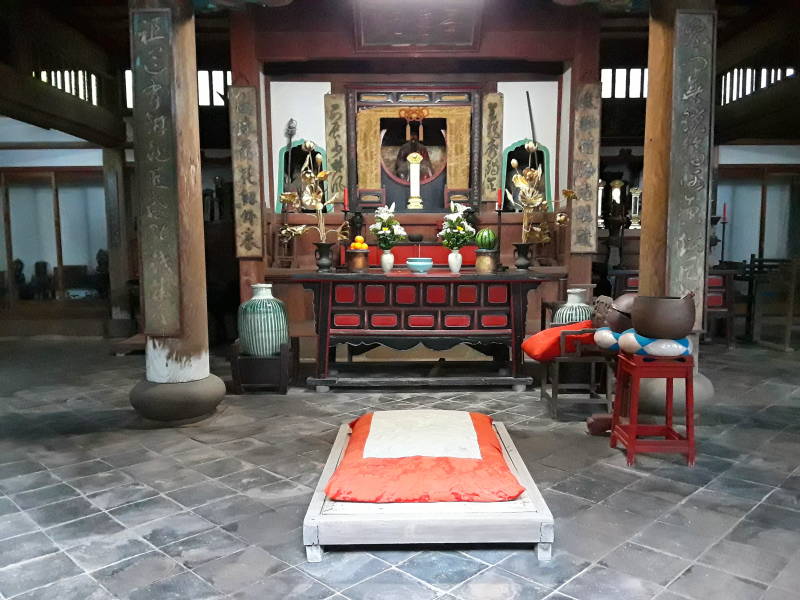
The O-Bon festival is held at Sōfuku-ji every year in late July, honoring the spirits of ancestors. It comes from the Ghost Festival tradition of China, which in turns comes from the Buddhist Ullambana and Taoist Zhongyuan.
The above is specific to Nagasaki. Or maybe you want to explore other places in Japan.





































